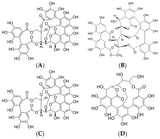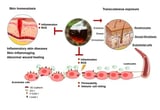Wood Distillate and Chestnut Extracts: New Frontiers in Antioxidant, Anti-Inflammatory, and Anticancer Treatments
August 25, 2024
Chemical analysis of chestnut by-products revealed significant amounts of bioactive polyphenols, particularly ellagitannins, which are known for their health benefits.
In tests focusing on intestinal cells, chestnut extracts inhibited the release of pro-inflammatory mediators stimulated by inflammatory cytokines, showcasing their anti-inflammatory effects.
Overall, the bioactive compounds found in chestnut bark extracts, including polyphenols and flavonoids, are believed to possess anticancer effects and promote DNA repair mechanisms.
In vitro studies demonstrated that low concentrations of wood distillate effectively reduced inflammatory markers, specifically COX-2 and mPGES-1, in human umbilical vein endothelial cells (HUVEC).
Furthermore, treatment with wood distillate resulted in decreased levels of reactive oxygen species (ROS), indicating a reduction in oxidative stress across various cell types.
Recent research highlights the potential of wood distillate as a natural product with promising antioxidant and anti-inflammatory properties, making it a candidate for medical applications.
This study also emphasizes the importance of recycling and valorizing chestnut by-products, which contributes to environmental sustainability and promotes a circular economy.
The chestnut extract demonstrated antimicrobial activity against Staphylococcus aureus and Escherichia coli, with established minimum inhibitory concentrations for both bacteria.
Additionally, the extract showed potential anticancer properties, as it significantly decreased metabolic activity in melanoma cells at certain concentrations.
Despite a reduction in total polyphenol content after simulated gastrointestinal digestion, the extracts retained their anti-inflammatory and scavenging activities.
The study noted that the bark of the chestnut tree contains a high concentration of active tanning substances, primarily tannins, which are crucial in various industries.
Optimal extraction methods for ellagitannins were identified, with the highest yield achieved using a 10% sodium hydroxide solution.
Summary based on 3 sources

